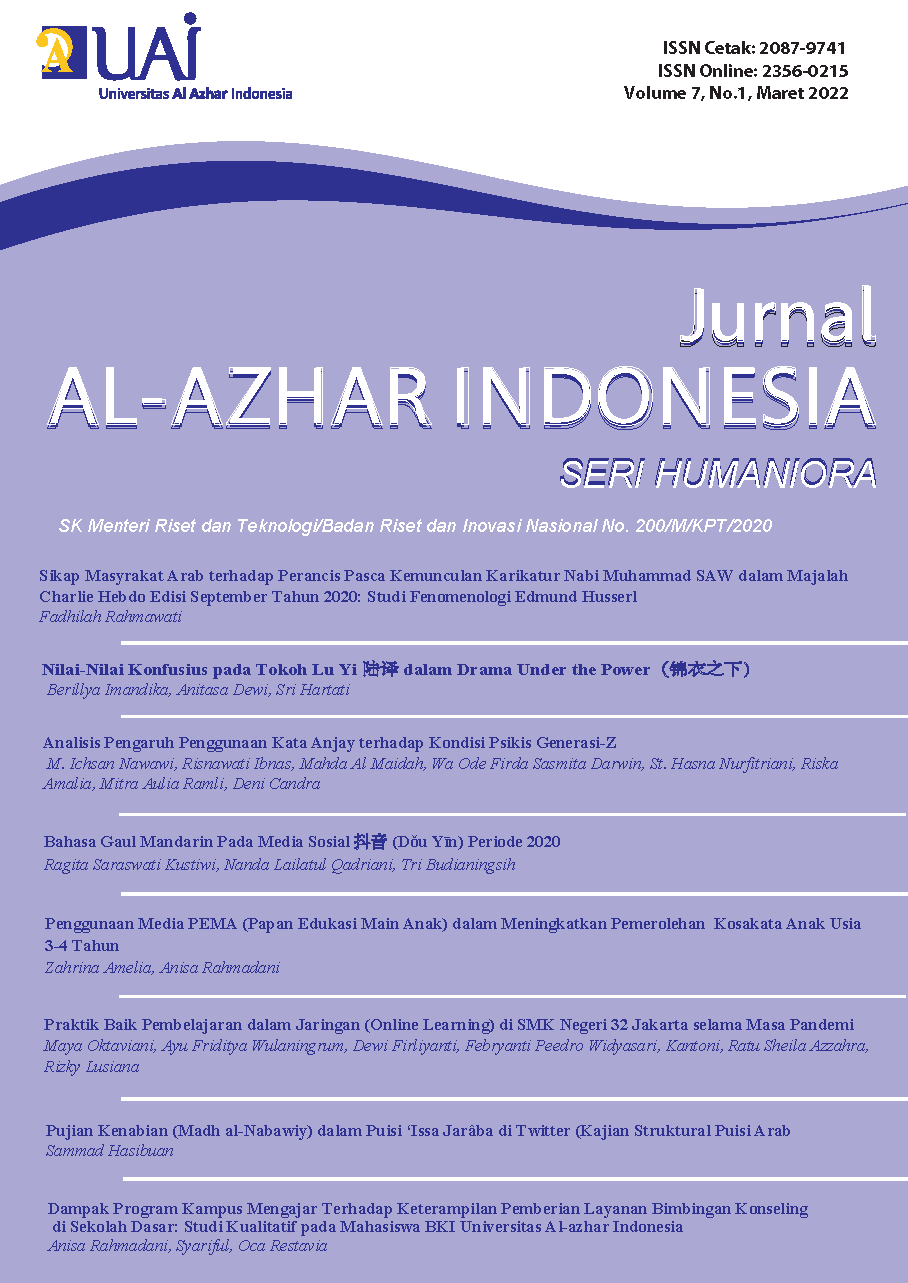Bahasa Gaul Mandarin Pada Media Sosial 抖音 (Dǒu Yīn) Periode 2020
DOI:
https://doi.org/10.36722/sh.v7i1.896Abstract
Along with the development of increasingly sophisticated technology, the use of Internet slang has grown rapidly through social media platforms, one of them is social media 抖音(DÇ’uyin). To solving communication problems and understand the developmental treasures of Mandarin, it is necessary to understand the meaning, factors, and impacts of Internet slang. This study uses the qualitative method. The data from this study were obtained from video based on the hashtag #2020æŠ–éŸ³ç½‘ç»œç”¨è¯ and the hashtags of each Internet slang. The results of this study indicate that the 25 internet slang on social media DÇ’u YÄ«n in the 2020 period was composed of 5 types, that is an old word with new meanings (52%), words or sentences with innovations (16%), homophonic (16%), absorption of foreign language (8%), and abbreviations (8%). In addition, the factors for the formation of internet slang, among them are creativity and the reality of social factors. The impact of the formation of internet slang can be seen from the positive and negative impacts.
Keywords: Internet slang, popular language, social media, Dou Yin
References
R. Devianty, “Bahasa Sebagai Cermin Kebudayaan,†Jurnal Tarbiyah, Vol 24, 2017.
L. Zhifei dan D. Yarowsky, “Minind and Modeling Relations Between Formal and Formal Chinese Phrases from Web Corpora,†Johns Hopskins University: Baltimore, 2008.
E. Putriana, “Penggunaan Bahasa Gaul Dalam Meningkatkan Keakraban pada Pergaulan di Kalanagan Mahasiswa Sosiologi angkatan 2013,†FISIP Universitas Tadulako, Universitas Tadulako: Sulawesi Tengah, 2017.
æ¦å°å†›, “群体认知视域下大å¦ç”Ÿç½‘络用è¯è€ƒå¯Ÿä¸Žåˆ†æž,†西åŽå¤§å¦å¦æŠ¥(哲å¦ç¤¾ä¼šç§‘å¦ç‰ˆ), 26-33, 2020.
赵娜, “近二å年网络用è¯åˆ†æœŸç ”究,†é²ä¸œå¤§å¦ : 硕士å¦ä½è®ºæ–‡, 2019.
S, Karina Fefi Laksana, “Ragam Bahasa Gaul Bahasa Mandarin Dalam Media Sosial Wechat Periode Agustus s.d Oktober 2015,†Universitas Negeri Surabaya : Surabaya, 2015.
å¾æ¶›, “网络è¯è¨€çš„特点åŠå…¶å¯¹ç”Ÿæ´»çš„改å˜,†江è‹çœå¹¿æ’ç”µè§†æ€»å° : å—京, 2015.
于艳平, “网络è¯è¨€çš„预æ特å¾åŠå¾¡ç”¨åŠŸèƒ½æŽ¢æž,†河å—å¸ˆèŒƒå¤§å¦ : æ²³å—岸, 2006.
陈æœç , “从“给力â€çš„æµè¡Œçœ‹ç½‘络è¯è¨€çš„交际功能,†å—å®: 广西, 2010.
Mamik, Metodologi Kualitatif, Sidoarjo : Zifatama Publisher, 2015.




